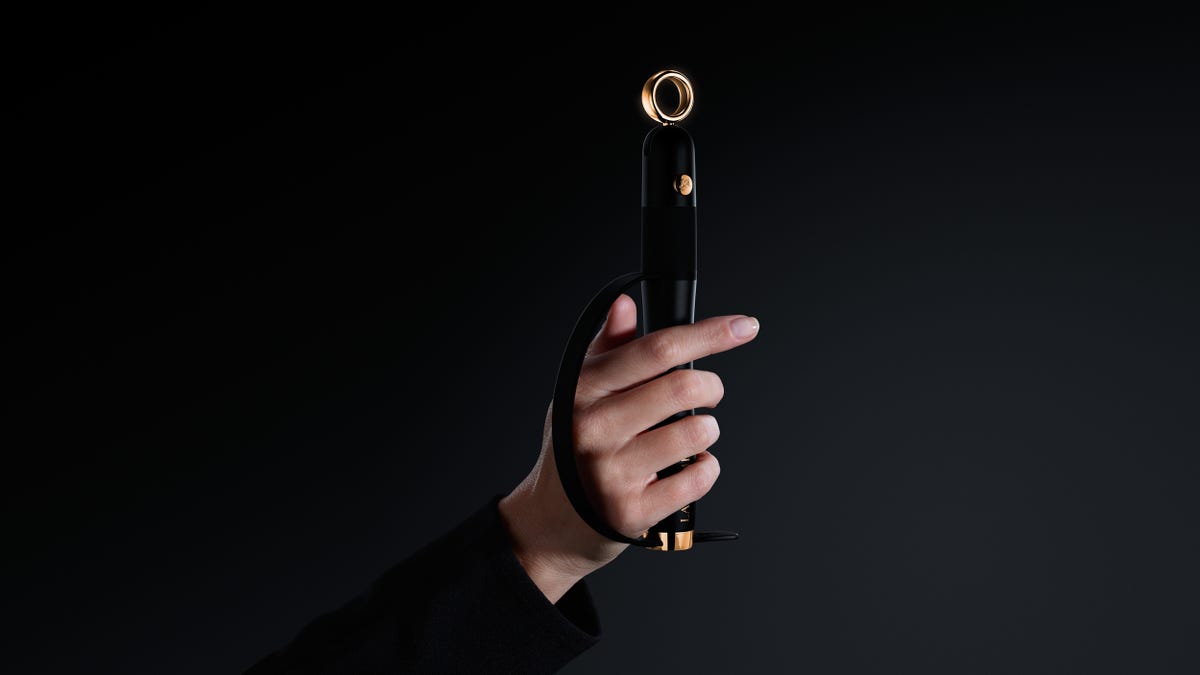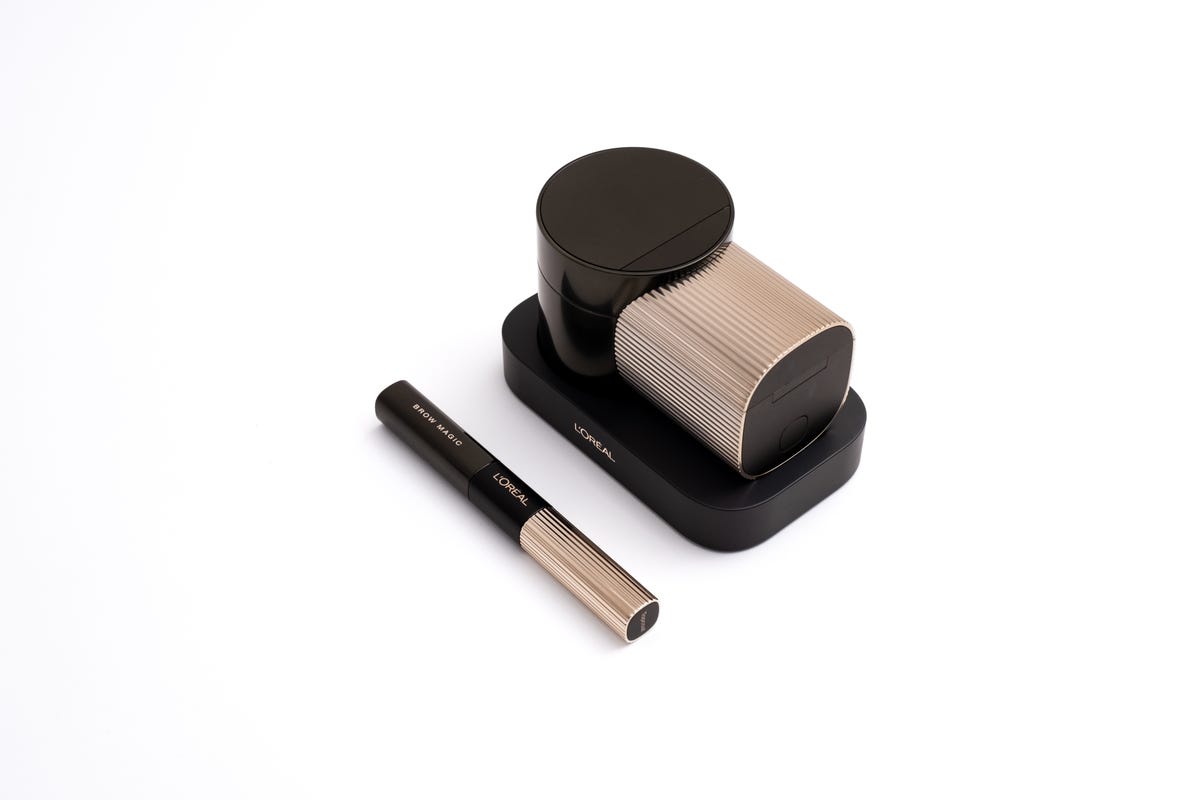Despite approximately one billion people around the world living with a disability, historically the beauty industry has not manufactured products that accommodate their needs. With Selma Blair sharing her multiple sclerosis makeup routine on TikTok and launching a line of inclusive tools, accessibility is now a topic of conversation for many brands.
L’Oréal Introduced Two Beauty Assist Tech Products at CES this year: HAPTA and L’Oréal Brow Magic. And I will say that they are a breath of fresh air. Both products bring accessibility and inclusion to an industry that has traditionally missed the mark. About time, right?
I was able to speak with Guive Balooch, the global head of L’Oréal’s technology incubator, about the company’s accessibility products. His take on accessibility in beauty is simple: “Self-expression should have no barriers or limitations.”
HAPTA
L’Oréal’s first product is the HAPTA makeup applicator. It is developed in collaboration with Verily Life Sciences, which created the technology for Liftware, a line of robotic forks and spoons that help people with mobility issues eat. Verily Life Sciences is an Alphabet company.
HAPTA is similar. It is a handheld computerized makeup applicator for people with limited mobility in their hands or arms. It’s surprisingly easy to use; most of the HAPTA applicator is held in the hand, with the attachment at the end attached by magnets, no screwing or opening required. Inside the device are real-time sensors and smart motion controls that keep the lipstick upright no matter what angle you hold it at. The accessory rotates 360 degrees.

The real
The HAPTA tool will launch with the L’Oréal-owned Lancôme lipstick and accessory in late 2023. Future makeup applicators are expected, however. Balooch said: “We won’t stop until we have all the make-up applications done.” He expects about one or two additional accessories, like mascara and foundation, to be released in 2024 and 2025.
I was immediately struck by how elegant and complete the device is. All parts are conveniently integrated into the charging base. This shouldn’t come as a surprise, as all testing was done in the community it’s designed for.
L’Oréal eyebrow magic
The L’Oréal Brow Magic Applicator is reminiscent of the Opte skincare and makeup printer that was shown at CES in 2020. Developed in partnership with Prinker, this electronic brow applicator uses Modiface AR technology to eliminate the need for a large amount of products and a part of your time. It is the first manual electronic eyebrow applicator. And it works in seconds.
“It’s bridging the gap between professional and home. Upgrading home users to something that works no matter what your skill level, no matter what your creative level is. You can achieve whatever you want for your beauty,” Balooch said.

The new L’Oréal Brow Magic makeup applicator.
First, it scans your face with the Brow Magic app, which uses AR technology to show what your brow options will look like on your face. After selecting your style, move the device along the brow line in a single motion for each brow. The tool has 2,400 tiny nozzles at 1,200 dpi resolution, which print hundreds of hair-like temporary tattoos on the face. You can remove it at the end of the day with a standard makeup remover.
Sensors in the device allow it to locate your hair and match the speed at which you’re moving. There is no pressure to go at the right speed: the device detects and adapts.
Nine colors will be available for the 2023 launch. One ink cartridge, containing three colors, is expected to last four to six months if used daily, depending on the size of your brows.
Is this the future of beauty accessibility?
There’s no sugarcoating it: accessibility has never been guaranteed in the beauty industry. Makeup is supposed to be for everyone, and maybe from now on, it finally is.
Many people with disabilities have been frustrated by purchasing and applying makeup products that were not designed for their needs. In recent years, there has been a shift in the industry towards inclusion. Some brands have already started to launch products in accessible packaging or products that are easier to grasp. For example, Selma Blair and Guide Beauty have released easy-to-grip makeup tools designed to guide the hand during application.
Asked what impact he hopes the products will have on the industry, Balooch said: “I can humbly say that I hope we are leading, but I also hope it leads everyone to create new technologies in this space.”
L’Oréal Brow Magic and HAPTA applicators are cutting-edge products of inclusion and accessibility to make up. It is not enough to be able to open the products; they also need to work for you.
“Now there are a lot of sensors and technologies that are more accessible to enable projects like this. I hope the whole industry does more,” Balooch added.
The information contained in this article is for educational and informational purposes only and is not intended to be health or medical advice. Always consult a physician or other qualified healthcare provider regarding any questions you may have about a medical condition or healthcare goals.
Source: news.google.com